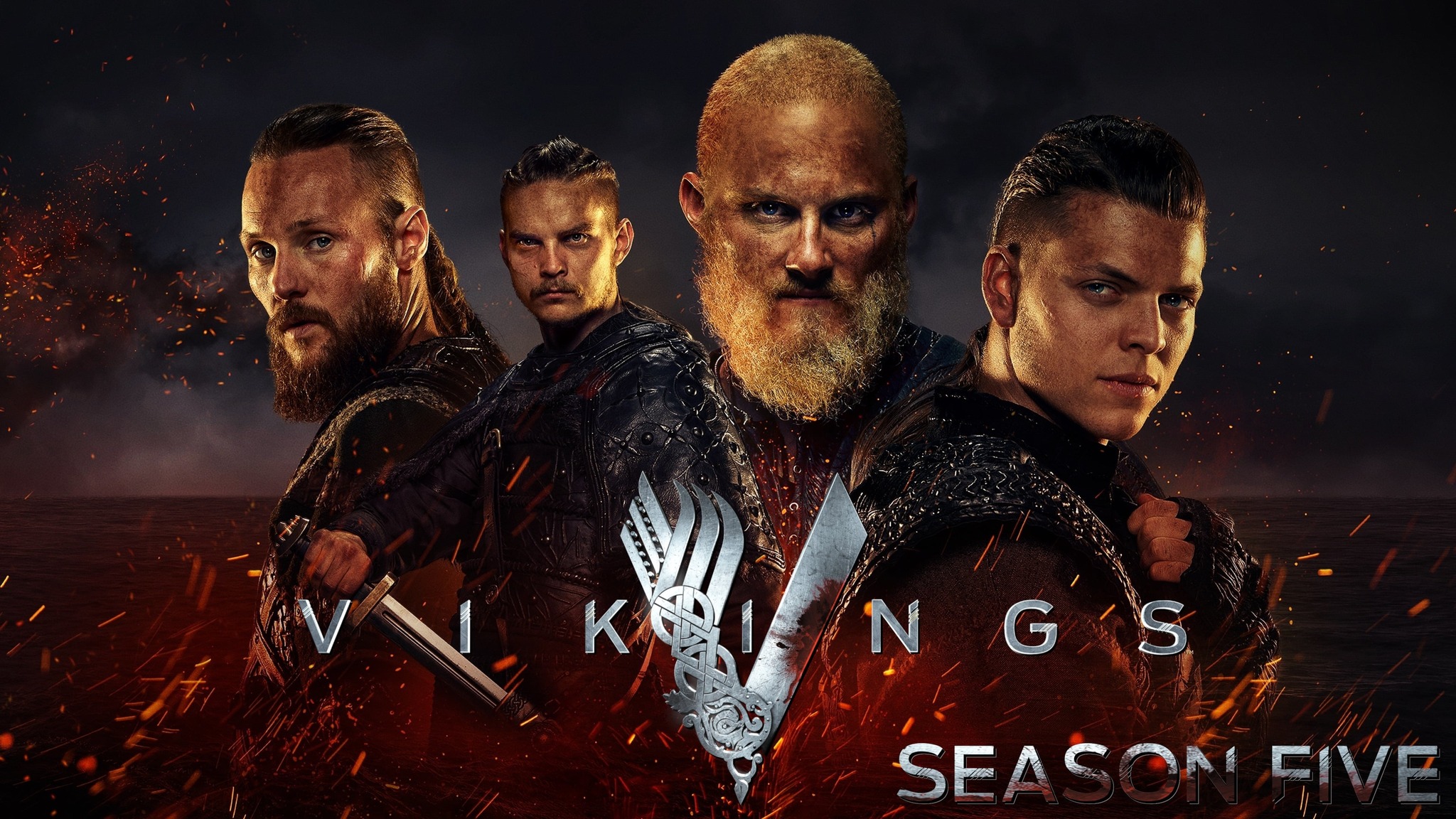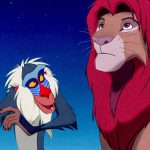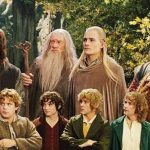Vikings (TV Series 2013–2020)

“Vikings,” a historical drama television series created and written by Michael Hirst, aired from 2013 to 2020 and stands as a significant contribution to the genre of historical television. The series chronicles the legendary exploits of Ragnar Lothbrok, a semi-mythical Norse hero, and his descendants, providing a rich tapestry of Viking culture, politics, and mythology. Over its six seasons, “Vikings” has garnered acclaim for its compelling storytelling, nuanced character development, and historical authenticity. This essay explores the series’ plot, characterization, thematic elements, visual style, and its impact on the portrayal of Viking history in popular media.
“Vikings” begins with the rise of Ragnar Lothbrok, portrayed by Travis Fimmel, a farmer who dreams of exploring new lands beyond the horizon. The series introduces Ragnar as a charismatic and ambitious figure, challenging the traditional Viking way of life by advocating for voyages westward, which leads to encounters with previously unknown territories and peoples.
The narrative structure of “Vikings” is characterized by its episodic exploration of historical events and personal dramas. The series intricately weaves historical events with fictional elements, focusing on Ragnar’s ascension to power, his complex relationships with his family and allies, and his struggles against rival factions.
As the series progresses, it expands to include the stories of Ragnar’s sons, including Ivar the Boneless (Alex Høgh Andersen), Bjorn Ironside (Alexander Ludwig), and Sigurd Snake-in-the-Eye (David Lindstrøm). The show explores their individual quests for power, their contributions to Viking history, and the family dynamics that shape their destinies.
The narrative also delves into Viking interactions with other cultures, including the English and French kingdoms, adding layers of political intrigue and cultural conflict. This expansion enriches the series, providing a broader historical context and deeper exploration of the Viking influence on medieval Europe.
Michael Hirst, the creator of “Vikings,” is known for his work on historical dramas such as “The Tudors” and “Elizabeth.” His direction in “Vikings” is marked by a commitment to historical authenticity and a deep appreciation for Norse mythology. Hirst’s approach to storytelling involves blending historical facts with dramatic elements, creating a narrative that is both educational and entertaining.
The visual style of “Vikings” is characterized by its gritty realism and attention to detail. The cinematography, by John C. Conroy and other contributors, captures the harsh and rugged landscapes of Scandinavia, as well as the grandeur of medieval European cities. The use of natural lighting, sweeping landscapes, and detailed costume design contributes to the show’s immersive atmosphere.
Battle scenes and action sequences are a prominent feature of the series, and the direction of these scenes emphasizes both the brutality and the strategic aspects of Viking warfare. The choreography and special effects used in the combat scenes are designed to reflect the historical techniques and equipment of the time, adding to the authenticity of the portrayal.
The performances in “Vikings” are a key factor in the show’s success. Travis Fimmel’s portrayal of Ragnar Lothbrok is central to the series, capturing the character’s ambition, leadership, and inner turmoil. Fimmel’s performance brings depth to Ragnar, making him a complex and compelling protagonist whose personal and political struggles drive the narrative.
Catherine Walston’s portrayal of Lagertha, Ragnar’s first wife, is notable for its strength and nuance. Lagertha is depicted as a warrior and a leader in her own right, and Walston’s performance highlights her character’s independence and resilience. Lagertha’s role in the series challenges traditional gender roles and adds a layer of feminist perspective to the narrative.
Alexander Ludwig’s portrayal of Bjorn Ironside, Ragnar’s son, showcases the character’s evolution from a young warrior to a powerful leader. Ludwig’s performance captures Bjorn’s ambition, bravery, and internal conflicts, making him a central figure in the latter seasons of the series.
Other notable performances include Gustaf Skarsgård as Floki, a shipbuilder and Ragnar’s close friend, and Clive Standen as Rollo, Ragnar’s brother. Skarsgård’s portrayal of Floki adds a mystical and eccentric quality to the series, while Standen’s depiction of Rollo explores themes of loyalty and betrayal.

“Vikings” explores several themes, including power, family, fate, and the clash of cultures. The theme of power is central to the series, as characters navigate the complex dynamics of leadership, conquest, and political intrigue. Ragnar’s rise to power and the subsequent struggles of his descendants highlight the often brutal and treacherous nature of medieval politics.
Family dynamics are another important theme, with the series examining the relationships between Ragnar and his family members, including his wives, sons, and brothers. The exploration of family loyalty, rivalry, and succession adds emotional depth to the narrative and enriches the character development.
The concept of fate and destiny is deeply rooted in Norse mythology and plays a significant role in the series. The show incorporates elements of prophecy and supernatural beliefs, reflecting the Viking worldview and adding a mystical dimension to the story.
The clash of cultures is also a prominent theme, as the Vikings encounter and interact with other civilizations, including the English and the French. The series portrays these encounters with a focus on cultural differences, conflict, and mutual influence, providing a broader historical perspective.
The emotional impact of “Vikings” is heightened by its combination of dramatic storytelling, intense character arcs, and historical context. The series engages viewers with its compelling characters and high-stakes conflicts, creating a powerful and immersive viewing experience.

“Vikings” received generally positive reviews from critics and audiences alike, who praised its historical accuracy, complex characters, and engaging storytelling. The series was noted for its impressive production values, including its set design, costume work, and visual effects.
The show’s legacy is reflected in its impact on the portrayal of Viking history and culture in popular media. “Vikings” has contributed to a renewed interest in Norse mythology and medieval history, influencing other works in the genre and shaping public perceptions of the Viking era.
The series also spawned a successful spin-off, “Vikings: Valhalla,” which continues to explore the Viking age and expand on the world established in the original series. “Vikings” remains a significant and influential work, known for its ambitious storytelling and its contribution to the genre of historical drama.

“Vikings” (2013–2020) is a landmark television series that offers a captivating exploration of Norse history, mythology, and culture. Created by Michael Hirst, the series combines historical accuracy with dramatic storytelling, resulting in a rich and immersive portrayal of the Viking era. The show’s compelling characters, intricate plotlines, and stunning visual style contribute to its status as a notable entry in the historical drama genre. With its exploration of themes related to power, family, fate, and cultural conflict, “Vikings” provides both entertainment and insight, leaving a lasting impact on the portrayal of Viking history in popular media.











